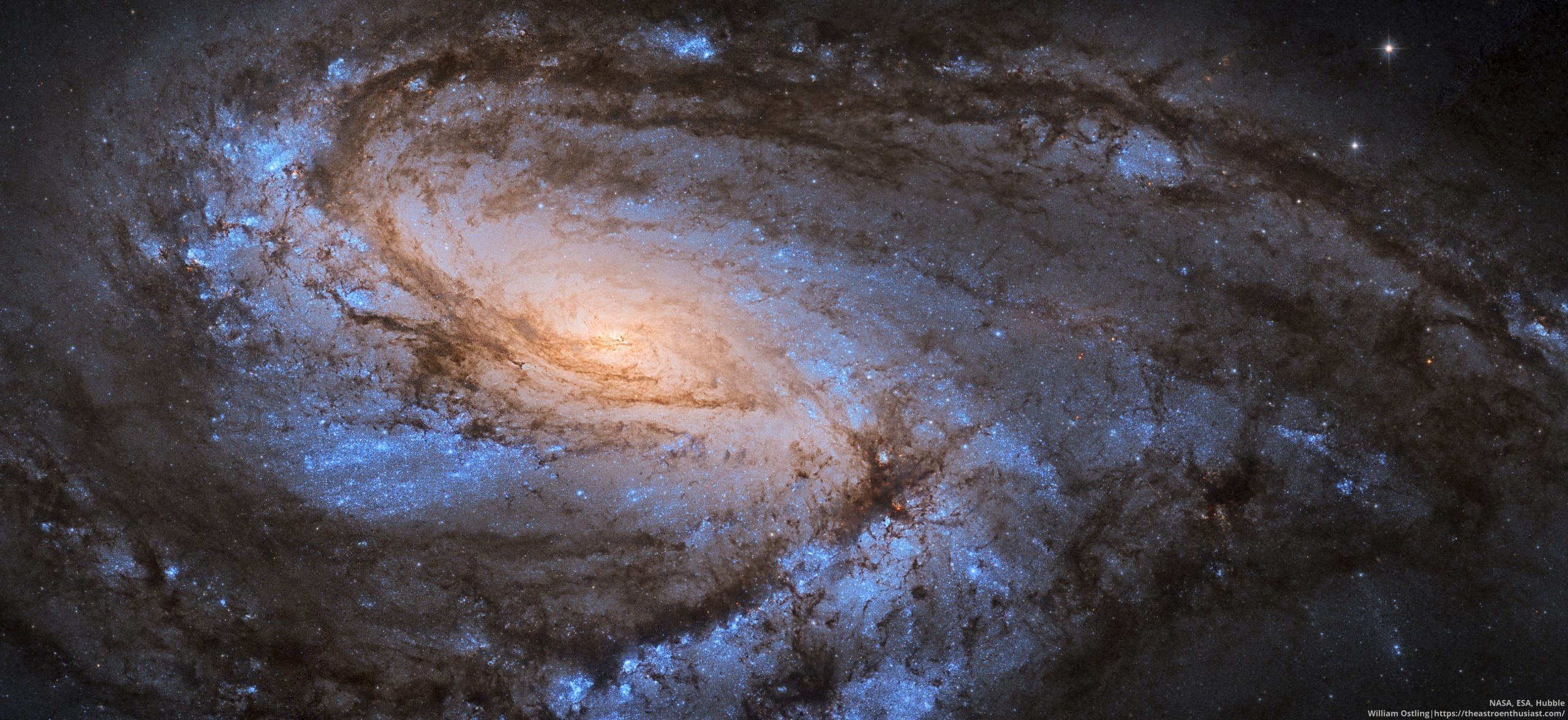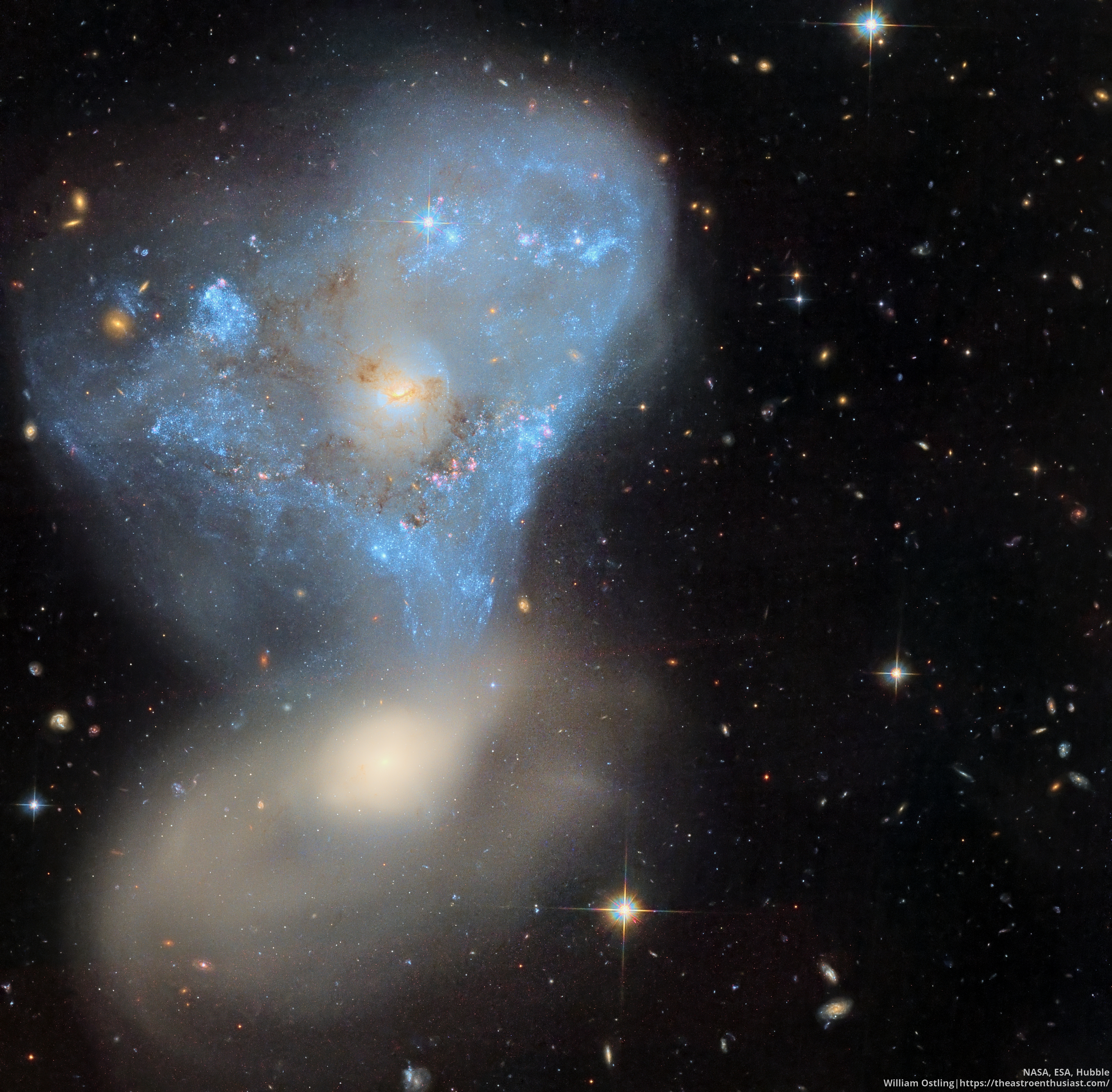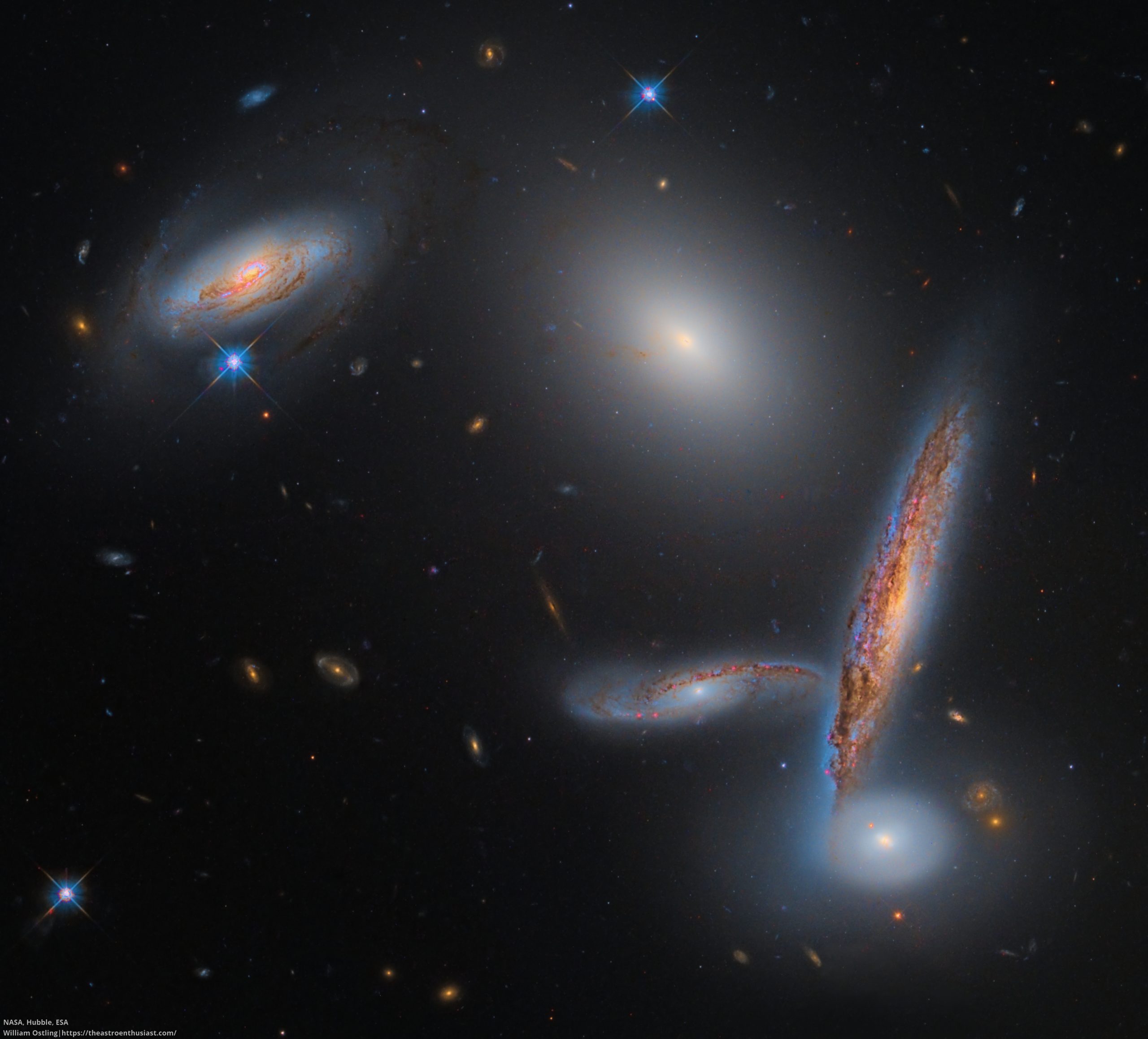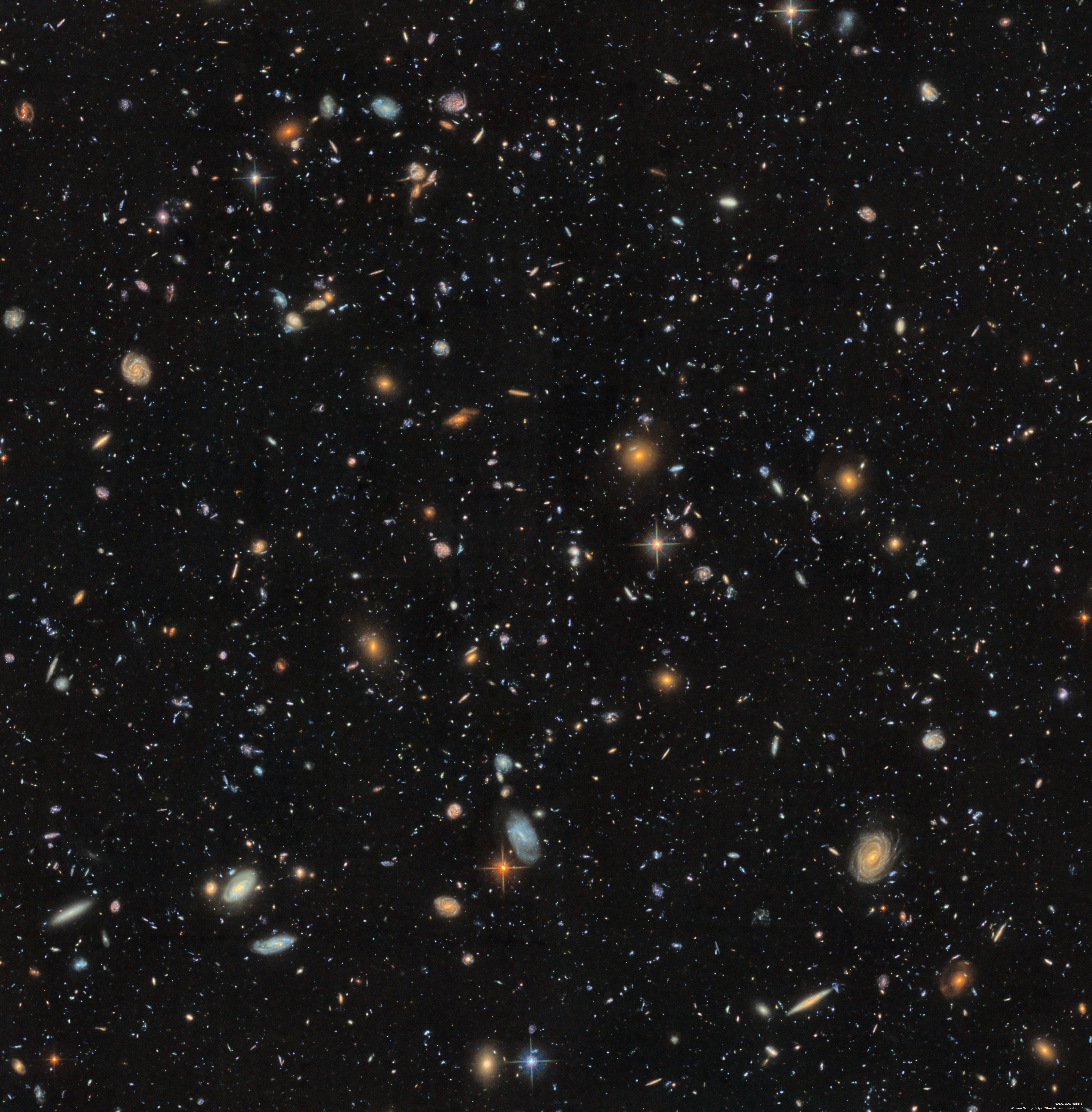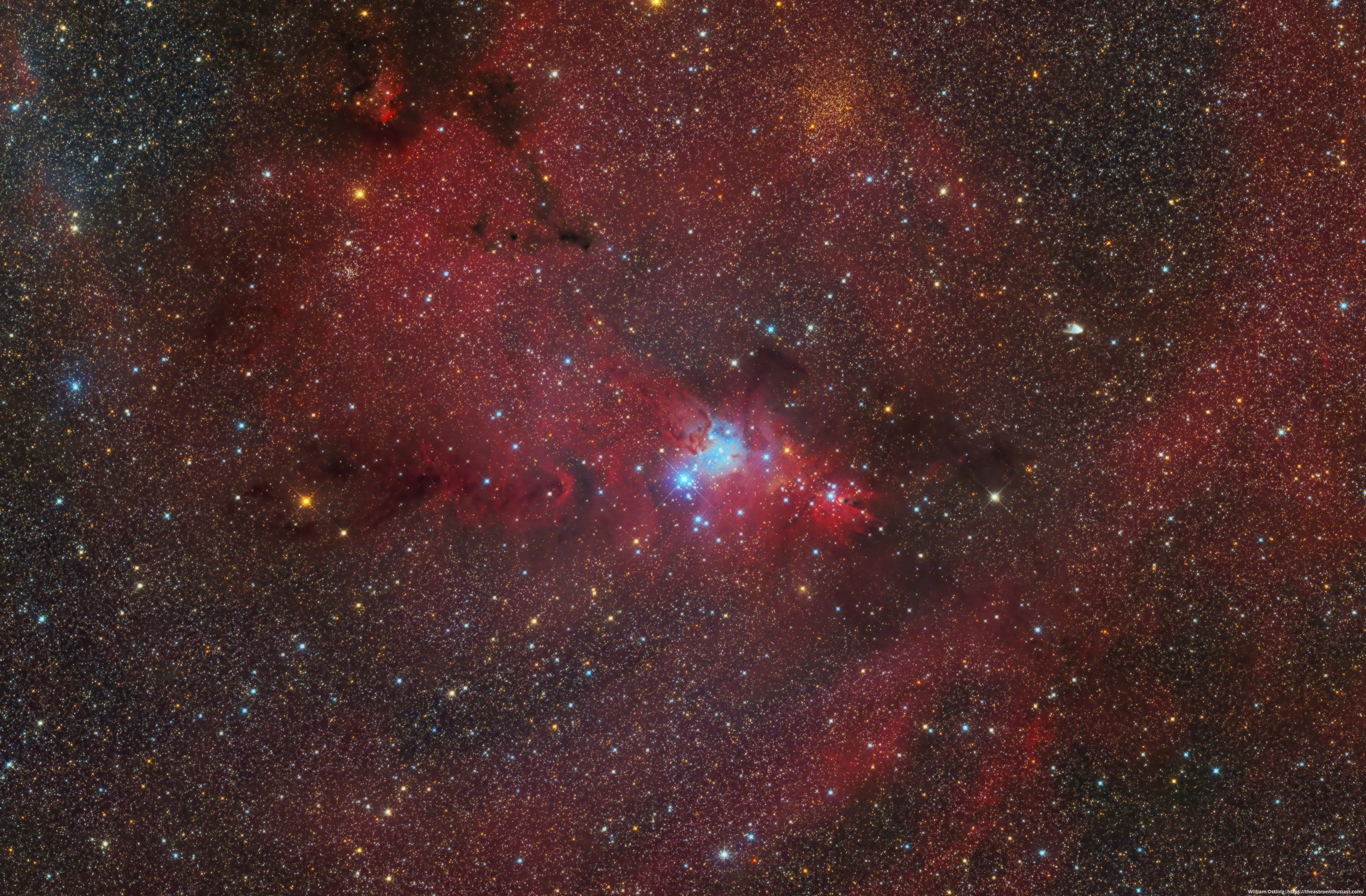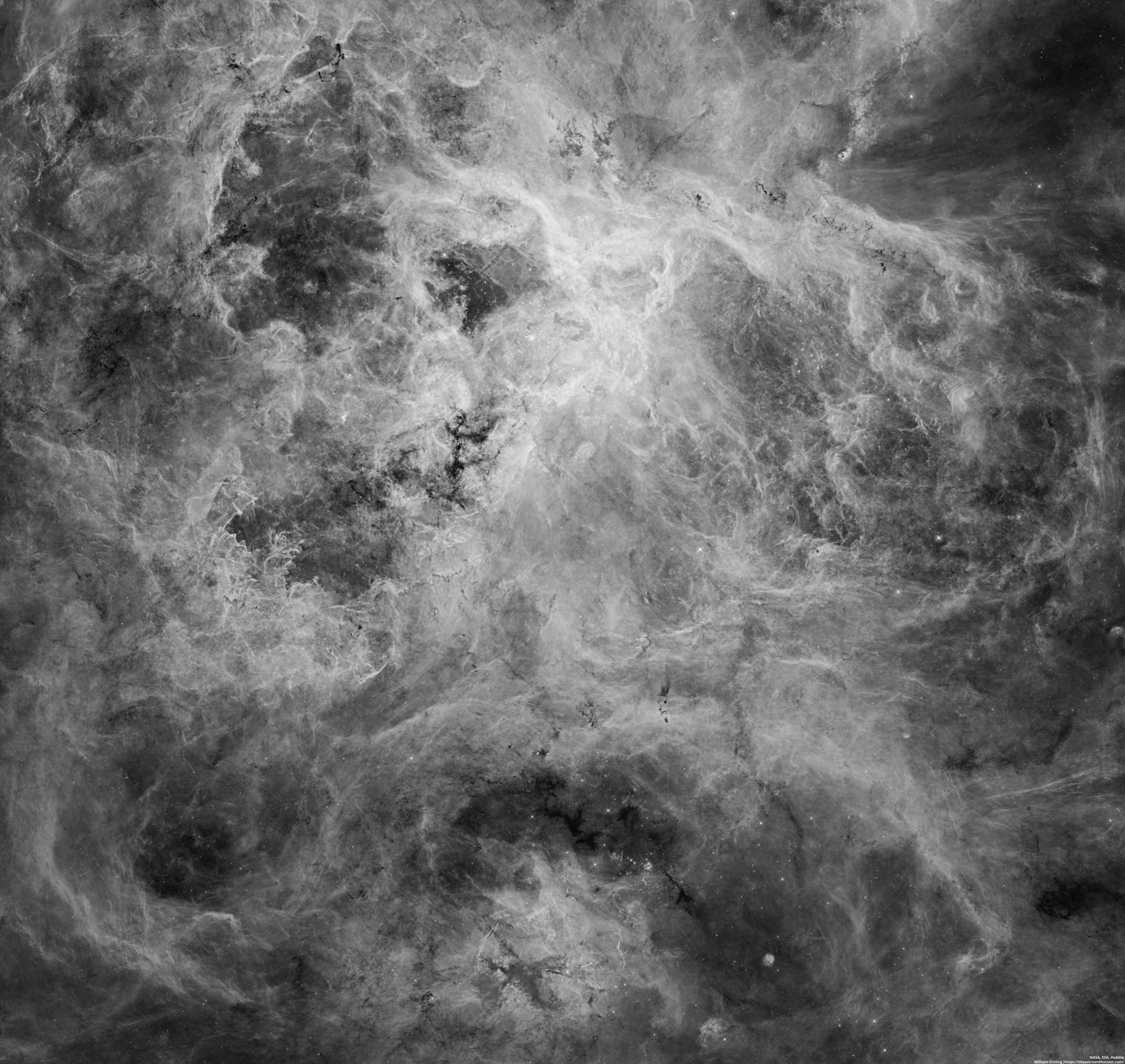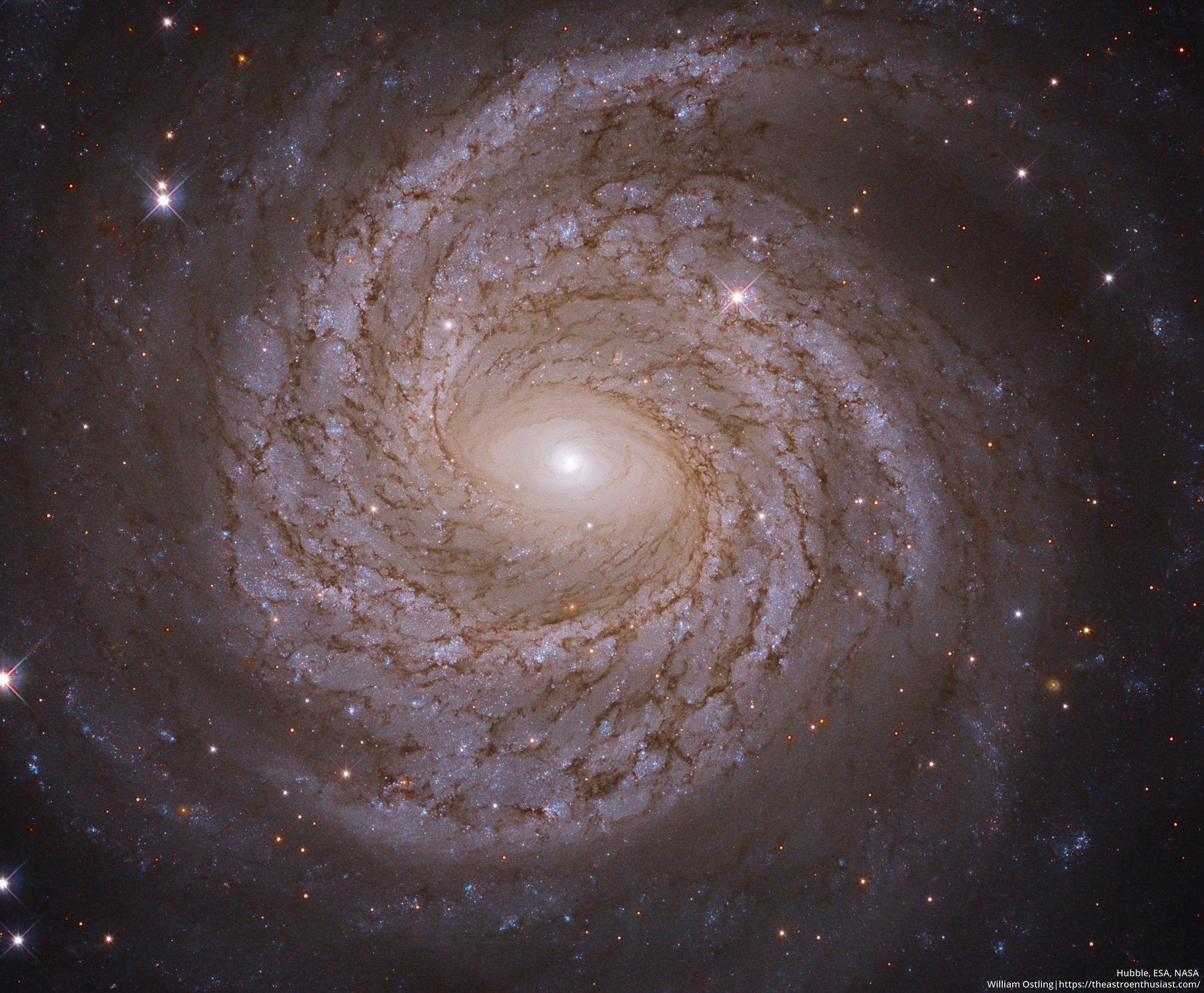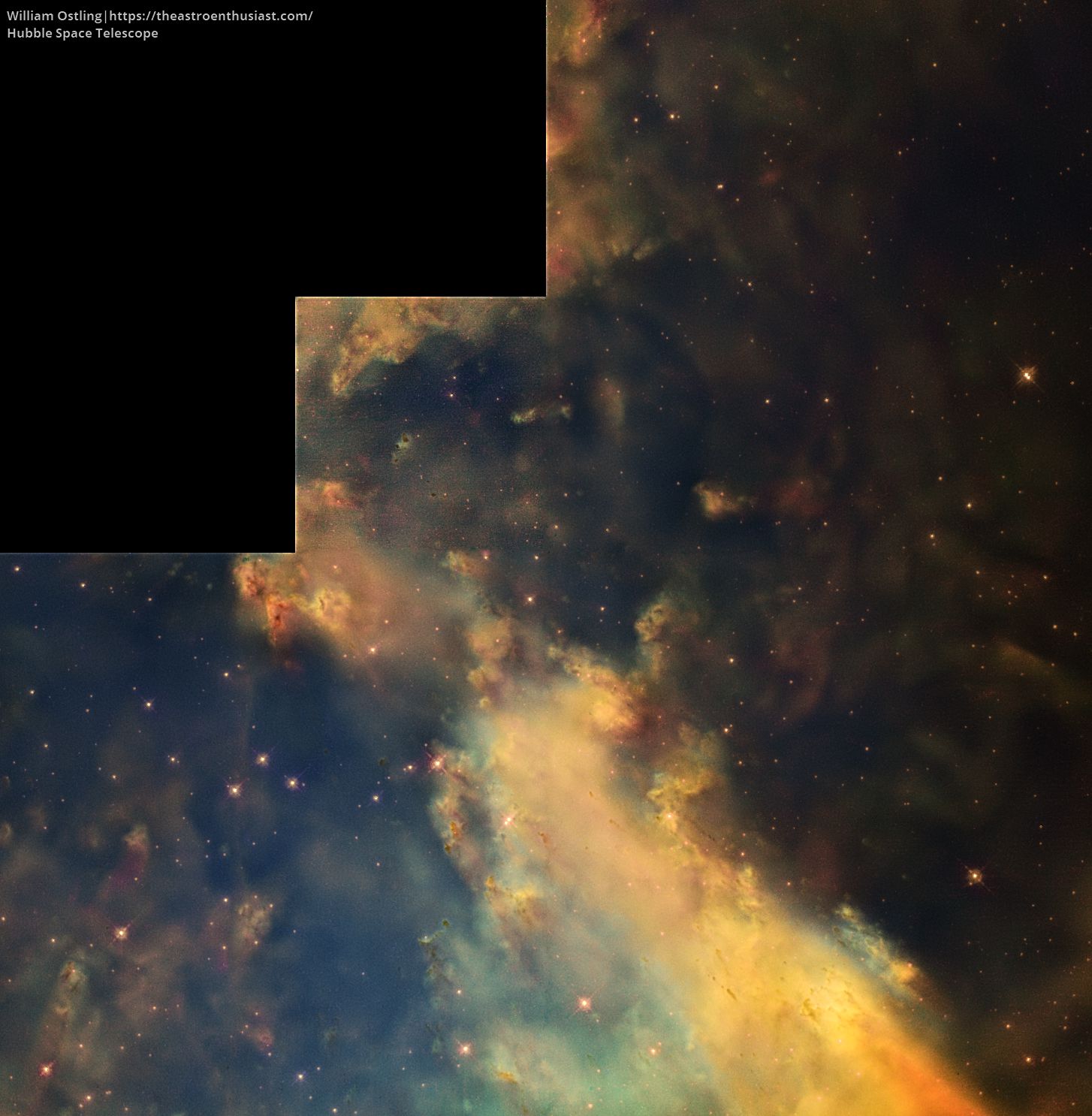Hubble’s view of the dusty spiral galaxy M66
The big and beautiful spiral galaxy messier 66 is perhaps one of the most dusty and exciting galaxies to explore. With the recent PHANGS-HST proposal, this galaxy was observed in the ultraviolet, visable, and near-infrared wavelegnths in a way that makes this island universe much easier to understand. First, shining brightly in the infrared are the young star clusters, shown in the image below as blue. Then, in the visible light spectrum, the dust lanes cascading over the stars come into sharp relief. Finally, in the infrared, […]
Read more